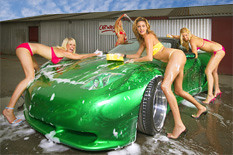The film stars Orson Welles, Joan Fontaine, Margaret O'Brien, Peggy Ann Garner, Sara Allgood, Henry Daniell, Agnes Moorehead, John Sutton, with Betta St. John and Elizabeth Taylor making early, uncredited appearances.
Plot
Director Robert Stevenson collaborated with novelist Aldous Huxley and theatrical-producer John Houseman on the screenplay for this 1944 adaptation of Charlotte Bronte's gothic romance Jane Eyre. After several harrowing years in an orphanage, where she was placed by a supercilious relative for exhibiting the forbidden trait of "willfulness," Jane Eyre (Joan Fontaine) secures work as a governess. Her little charge, French-accented Adele (Margaret O'Brien), is pleasant enough. But Jane's employer, the brooding, tormented Edward Rochester (Orson Welles), terrifies the prim young governess. Under Jane's gentle influence, Rochester drops his forbidding veneer, going so far as to propose marriage to Jane. But they are forbidden connubial happiness when it is revealed that Rochester is still married to a gibbering lunatic whom he is forced to keep locked in his attic. Rochester reluctantly sends Jane away, but she returns, only to find that the insane wife has burned down the mansion and rendered Rochester sightless. In the tradition of Victorian romances, this purges Rochester of any previous sins, making him a worthy mate for the loving Jane. The presence of Orson Welles in the cast (he receives top billing), coupled with the dark, Germanic style of the direction and photography, has led some impressionable cineasts to conclude that Welles, and not Stevenson, was the director. To be sure, Welles contributed ideas throughout the filming; also, the script was heavily influenced by the Mercury Theater on the Air radio version of Jane Eyre, on which Welles, John Houseman and musical director Bernard Herrmann all collaborated. But Jane Eyre was made at 20th Century-Fox, a studio disinclined to promote the auteur theory; like most Fox productions, this is a work by committee rather than the product of one man. This in no way detracts from the overall excellence of the film; of all adaptations of Jane Eyre (it had previously been filmed in 1913, 1915 and 1921, and has been remade several times since), this 1943 version is one of the best. Keep an eye out for an uncredited Elizabeth Taylor as the consumptive orphanage friend of young Jane Eyre (played as child by Peggy Ann Gardner).Production notes
- The film's screenplay was based on a radio adaptation of the novel by Orson Welles' Mercury Theatre on the Air, which John Houseman collaborated on.
- The film was acclaimed for its recreation of the Yorkshire Moors. It was actually filmed entirely in Hollywood on a heavily disguised sound stage. The long shadows and heavy fog, which added the air of a Gothic novel lacking in so many remakes, were rumored to have been the brainchild of Orson Welles. He was offered a producer's credit as thanks for his contribution but declined the offer, believing that a person who is not a director shouldn't be "just" a producer.
- This was the 7th film version of the novel.
- It was during his scoring of the film that Bernard Herrmann started working on his opera Wuthering Heights, based on the novel of the same name by Charlotte Brontë's sister Emily. He quoted some themes from the Jane Eyre film score (and other of his earlier scores) in the opera.
Cast
- Joan Fontaine - Jane Eyre
- Orson Welles - Edward Rochester
- Peggy Ann Garner - Jane Eyre as a child
- Elizabeth Taylor - Helen Burns (uncredited)
- Edith Barrett - Mrs. Alice Fairfax
- Agnes Moorehead - Mrs. Reed
- Margaret O'Brien - Adele
- Sara Allgood - Bessie
- Henry Daniell - Henry Brocklehurst
- Hillary Brooke - Blanche Ingram
Quotes
The film begins with a voice over from Jane Eyre (an original contribution by the screenwriters):- My name is Jane Eyre... I was born in 1820, a harsh time of change in England. Money and position seemed all that mattered. Charity was a cold and disagreeable word. Religion too often wore a mask of bigotry and cruelty. There was no place for the poor or the unfortunate. I had no father or mother, brother or sister. As a child I lived with my aunt, Mrs. Reed of Gateshead Hall. I do not remember that she ever spoke one kind word to me.












0 comments:
Post a Comment